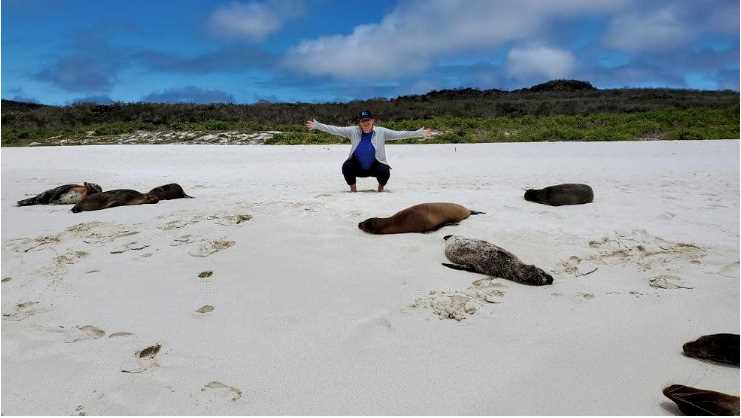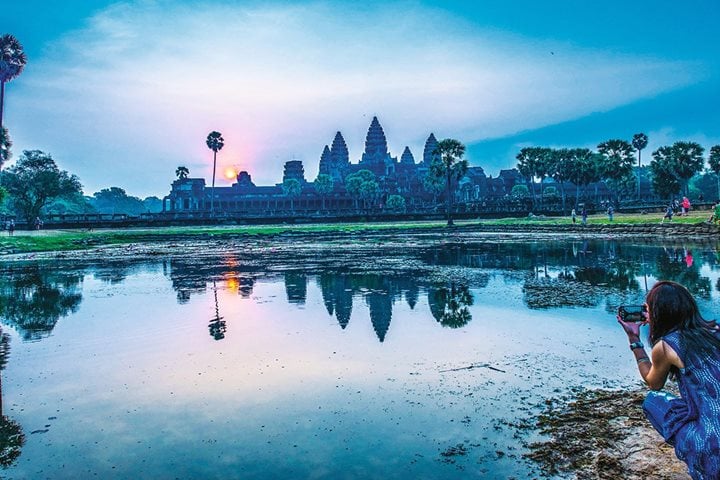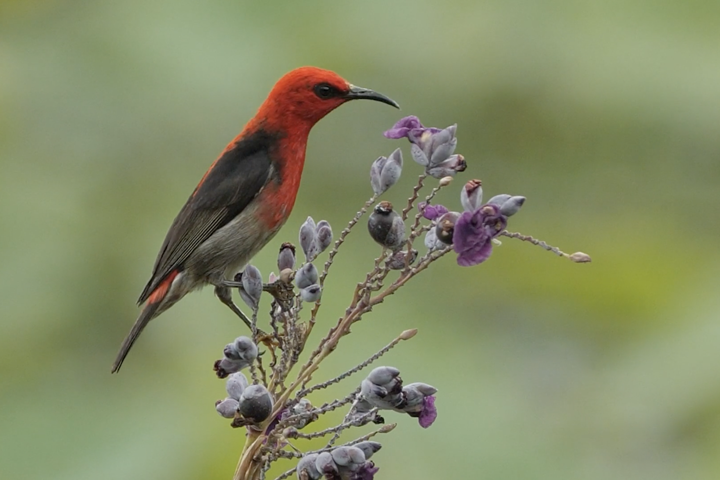Call +1.800.397.3348 or contact your travel advisor
September means back to school! And for one group of educators it means heading back to the classroom with some unforgettable lessons. Our 2019 class of Grosvenor Teacher Fellows recently returned from expeditions around the globe aboard Lindblad-National Geographic ships. Four of this year’s 45 fellows took time to share some of their favorite, funny, and unexpected moments in the wild—and the inspiring ways they’re bringing geographic awareness back to their students and communities. Get Inspired By Photos, Videos, Webinars, Stories, And Exclusive Offers. Sign Up
Name: Kerry HynesHometown: Rockaway Beach, NYSchool: New York City Department of Education—P.S. 176 (The Ovington School)Role: Elementary (K-5); Teaching Sustainability & Facilitating the Maker LabItinerary: Treasures of the Inside Passage: Alaska & British Columbia
What was the most surprising thing you discovered on your voyage?Before this expedition, I had never heard of the Kwakwaka’wakw First Nations people. It was humbling to be able to visit Alert Bay and the U’mista Cultural Centre where we were warmly invited to learn about Potlatch ceremonies, which are held for name giving, memorials, and other celebrations. One beautiful tradition within these ceremonies is the generosity bestowed on others, for one receives honor and standing by giving the most away, not receiving it. The respect for nature, heritage, and strength shown through adversity and the suffering they had to endure due to colonization were all moving examples as to how we can live, as well as a reminder that we cannot overlook injustices in the world.
Were there any funny or unexpected moments (which can definitely happen on expedition!)?Oh, there was definitely a lot of laughter aboard the National Geographic Quest. I’ll skip the story about how I earned the nickname “Crash” (that’s for another time) and go straight to the day we had our first bear sighting. As the anticipation of spotting a bear was growing, I ran back to my cabin and came out in a bear onesie! If we couldn’t see one on land, at least people could say they spotted an adorable one within close proximity. Guests aboard joked that it was a good luck charm because later that day we spotted a mama bear with two cubs. People kept requesting I put it on again in hopes of more bear sightings—luckily it didn’t take too much for me to oblige since it definitely put a fun spin on exploring.
How has this experience changed or inspired your teaching philosophy?I’ve become more open to embarking on the unknown. There is something to be said about embarking on journeys that bring you outside of your comfort zone. I think we forget that as adults. The encouragement we give to students to try, discover, and pursue the unknown somehow gets lost…we become immune to our own advice. And even though it can be terrifying, we grow when we seek out new, and sometimes uncomfortable experiences. I want to be that example for my students, and to show them that through a common goal, creating change can really happen. We’re going to take some leaps, explore, and collaborate in purposeful ways that will enrich our projects, but more importantly, hone into that adventure mindset and begin to develop our identities as change makers in the world.
Name: Laura ChaseHometown: Silver Spring, MDSchool: DC International SchoolRole: 10th Grade Chemistry TeacherItinerary: Svalbard, Iceland & Greenland
What was your most memorable moment from the voyage?There were so many but definitely doing the Polar Plunge! It was hilarious to see naturalists, crew members, teacher fellows, and guests cheering each other on in this ridiculous feat! Some people donned matching tutus, some wore bikinis, and my roommates and I wore plush polar bear hats. (They eventually filled with ice water and gave us major brain freeze!) We were egged on into jumping in first. As we held hands and tried not to eye the AED paddles in the corner, we screamed and flung ourselves into the freezing water. I went numb with cold and adrenaline. But it was all worth it—we were greeted back with an eruption of congratulations and warm blueberry soup.
How will you bring your experience to the classroom this year?During my expedition we stopped at Jan Mayen, a tiny volcanic island that lies in the Atlantic Ocean. It is the most remote place I’ve ever been with only 18 permanent residents living there. When our Zodiac pulled up on the beach, I saw a roll of plastic packing tape washed up on the sand. It struck me that someplace so remote was being impacted by the everyday lives of people thousands of miles away, without them even realizing it!
I plan to design a project around consumerism and the lifecycle of “our stuff.” I want students to consider how we acquire the raw materials for everyday products, who is impacted by raw material extraction, and what happens to their belongings after they are discarded. I hope that my photos and stories about Jan Mayen can drive home the urgency of environmental activism for my students.
Our guests love interacting with Fellows aboard ship. We hope the feeling was mutual! What was the experience like for you?I think that the Lindblad guests and I greatly enhanced each other’s learning experiences. I was blown away by the wealth of knowledge on the ship and humbled by the way we came together from all over the world to share in this Arctic expedition. I interviewed guests from seven different countries to learn how climate change has impacted job availability, the economy, and public health around the world. I hope to use those interviews to give my students a global perspective that contextualizes the long-term data sets that we analyze in class.
Likewise, I hope that I helped teach guests how education is changing from a traditional, lecture style pedagogy to a hands-on, investigatory endeavor that bridges subject areas and embeds content into global contexts. Exposing students to diverse stories will help them grow in empathy, and in their vision of what’s possible. I hope I encouraged guests to share their own expertise and worldviews with urban students who may not have traveled outside their hometowns. And I hope they will encourage teachers they know to apply for this fellowship.
Name: Richard SleeterHometown: Albuquerque, NMSchool: Eldorado High SchoolRole: Environmental Science & Geography TeacherItinerary: Tahiti to Hawaii: In the Wake of Ancient Navigators
What was your most memorable expedition moment?One cloudless night near the equator with stars so bright you could almost reach out and touch them, Captain Heidi Norling on the National Geographic Orion turned off the top lights of the ship and everyone gathered with excitement on the upper deck. From the darkness, the voice of our Polynesian Master Navigator and storyteller, Tua Pittman began to take us back in time. We learned the skills of the star compass, finding our direction using the North Star and Southern Cross like the ancient navigators who explored the vast Pacific Ocean. While listening and taking in the star-filled heavens, we imagined ourselves turning our rudder to keep the correct ones in front and behind. Tua spoke of using all our senses so we lay down on the deck to feel the motion of the sea through the spine of the ship. The lesson ended far too quickly and when the deck lights came back on, it left me longing to adventure out and become an ocean explorer.
What does geographic awareness mean to you and why is it so important to pass to the next generation? I’ve spent my life exploring nature, preferring my own long hikes and worldly adventures to watching others do theirs on TV. It has been my life’s goal to pass that explorer’s mindset on to the students I teach. While on expedition, I was immersed in the exploration of wonders of the world I never knew existed. It also introduced me to world-class adventurers and naturalists who conveyed a very humbling and urgent message. This world needs our immediate attention. It’s not enough to merely inform the next generation about the potential problems our earth faces, but it’s vital that we take an active role in solving them. On the island of Hiva Oa, we had the incredible opportunity to conduct a Citizen Science microplastics study. Using Zodiacs, we dragged a collection screen across the harbor in an effort to add to a worldwide database. I will be using this example in my classroom to formulate potential community studies my students can conduct in order to become Citizen Scientists in their own right.
Tell us about one of your favorite wildlife sightings.We had just begun our breathing exercises during an early morning yoga session when we were interrupted by a fin rising above the water. A pod of pilot whales surfaced to swim closer and closer to the ship. We could see whole families of whales with babies swimming alongside the adults. A hydrophone was dropped into the water so we might get to hear the clicking songs the whales use to communicate. Then it got even more interesting when a water-patrolling oceanic white tip shark swam back and forth along the side of the ship, as if to say no loitering here; please move along!
Name: Kelly BlaisHometown: Manchester, NHSchool: David R. Cawley Middle School, Hooksett, NHRole: 7th Grade Science Teacher & Summer STEM CoordinatorItinerary: Galápagos aboard National Geographic Endeavour II
What did you think about this type of expeditionary travel?
This was my first expedition! I travel on my own quite a bit, but this was a completely different experience. While the Galápagos was an amazing place, I wouldn’t have taken away nearly as much as I did if it weren’t for the naturalists and staff aboard the ship. They were a wealth of information and clearly had a passion for the archipelago which spread to the guests as we explored each island. It has changed the way I approach travel and exploring new places.
What was your favorite wildlife encounter?It was incredible to see all the iconic wildlife like blue-footed boobies, marine iguanas, and giant tortoises, but my favorite encounter was actually with flora—the prickly pear cactus. Each island has its own ecosystem, and if just one thing is different it can have a huge impact on how the species living there evolves over time, but you can’t necessarily see these adaptations. On the islands with land iguanas which eat the cactus, the prickly pear are tall with sharp spines. On islands where there are no land iguanas, the cactus is short and the spines are more hair-like, soft to the touch. It’s a tangible adaptation! It can be difficult to teach about things you can’t see but this cactus was a great clear example I can show my students.
How will you bring your experiences to the classroom this year?We had the opportunity to visit the Charles Darwin Research Center to learn more about the conservation work they’re doing there and talk with some of the people behind these great projects. I was inspired by their work, so I plan to work with my students and look at what conservation efforts are being led here in our own community, and then find a place of need where they can spearhead their own project. Students will reach out to the scientists at the Darwin Center as an authentic audience to ask questions about those projects as the students try to plan and coordinate their own.
Do you know an educator who is passionate about bringing the world to their students? The Grosvenor Teacher Fellowship is an amazing and unique opportunity. Have them visit NatGeoEd.org/GTF for more details and to learn how they can apply.




